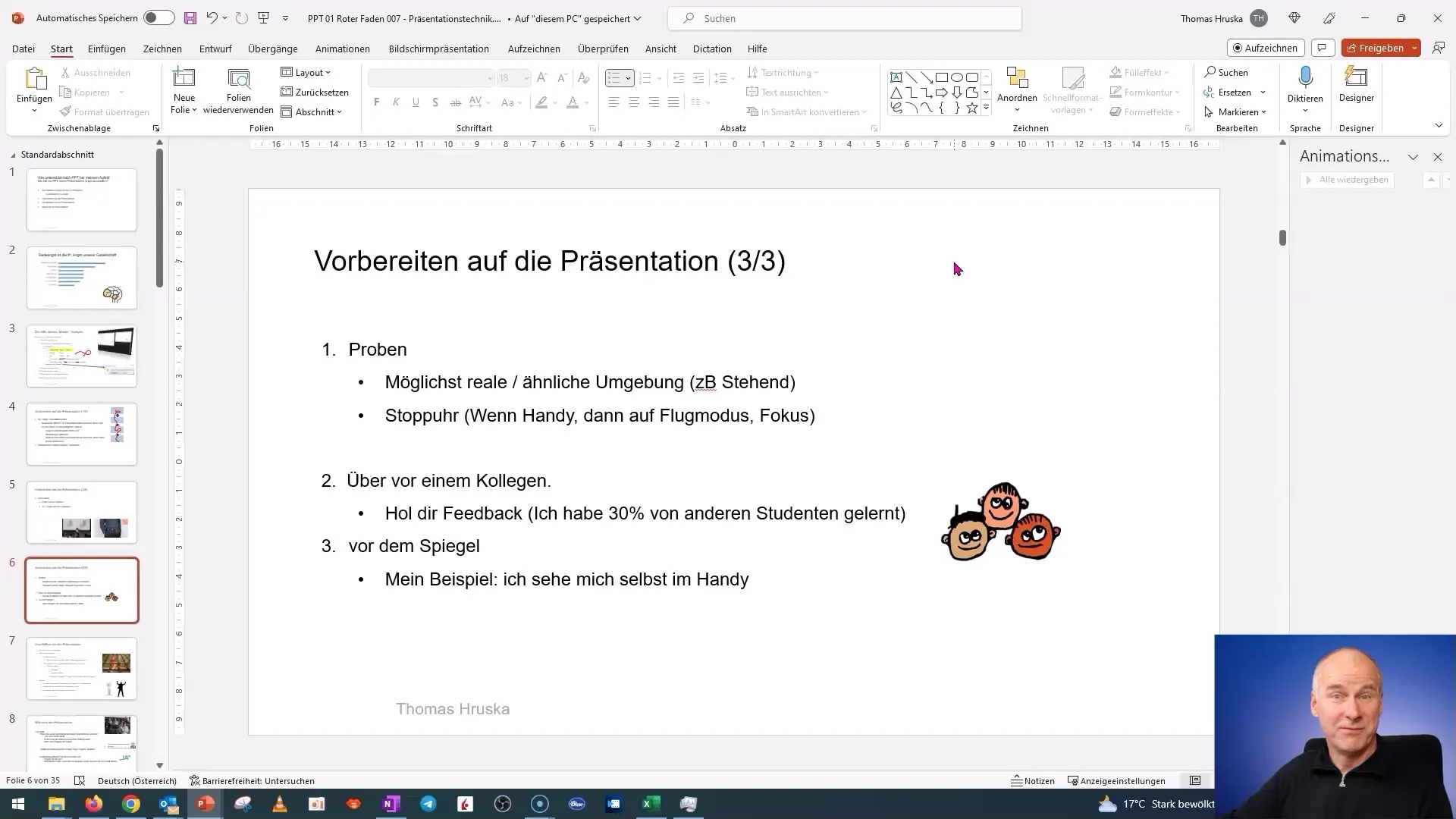The right preparation for a presentation is crucial for success. Whether you are an experienced presenter or a newcomer, practicing and getting feedback is essential. In this guide, you will learn how to prepare your presentation optimally - through real practice, constructive feedback from others, and the use of mirrors for self-reflection.
Main Takeaways
- Practice your presentation in a realistic environment.
- Use a stopwatch to keep track of your time.
- Practice in front of colleagues and ask for honest feedback.
- Practice in front of a mirror to improve your body language.
Step-by-Step Guide
1. Create a Realistic Practice Environment
The first step to a perfect presentation is setting up a realistic practice environment. Position yourself as you would during the actual presentation. For example, if you have an exam presentation, place your laptop as if you were standing in that room. If there is a large screen there, try to use your laptop as a presentation screen to simulate the feeling of the actual situation. Additionally, consciously move as if you were presenting live.

2. Practical Practice with Tools
If you are working with cue cards, hold them while you present. If you are using a laser pointer, have it ready. These small details will help you practice the movements you will make during the presentation. By practicing in the most realistic environment possible, you ensure that you are less nervous when it really matters.
3. Time Management with a Stopwatch
To make your presentation efficient, time management is extremely important. Have a stopwatch ready while you practice. You can use it either in the form of an app on your phone or use a conventional stopwatch. Make sure your phone is in airplane mode so that no incoming calls or messages distract you. This is a simple way to ensure that you stay within the set time frame.
4. Gather Feedback from Colleagues
One of the most effective methods to improve your presentation is to practice in front of colleagues or acquaintances. Invite them to listen to you while you present. Ask them for honest and constructive feedback. They may notice aspects in both your expression and body language that you are not aware of. The experiences and feedback from colleagues are invaluable and can help you take your presentation to a new level.
5. Practice in Front of the Mirror
Another recommended practice step is to practice in front of the mirror. This will help you perceive your facial expressions and gestures better. Place a mirror in a suitable location where you can see yourself full size. When you rehearse your speech, it will look like you are speaking to an audience, which will help you refine your body language. You create an image of how your performance could appear. This may feel strange at first, but self-reflection will help you build confidence.
6. Last-Minute Preparations Before the Presentation
Just before the presentation, focus on the final details. Have all tools ready and make sure you are familiar with the technical devices you are using. In the last moments before the performance, it is important to maintain calm and concentration. Trust in your preparations and be ready to inspire your audience.
Summary
In this guide, you have learned how important it is to properly prepare for a presentation. Whether through creating a realistic practice situation, using a stopwatch, or gathering feedback from colleagues - the right preparation is the key to a successful presentation. Also, take the opportunity to practice in front of a mirror to optimize your body language and facial expressions.
Frequently Asked Questions
How can I realistically practice my presentation?Create a practice situation that closely resembles the actual presentation.
Why is a stopwatch important?With the stopwatch, you keep track of time and ensure you stay within the set timeframe.
How can I practice my presentation in front of colleagues?Ask colleagues to listen to you and take their feedback seriously to improve yourself.
Does practicing in front of the mirror really help?Yes, it enhances your self-awareness and body language.


